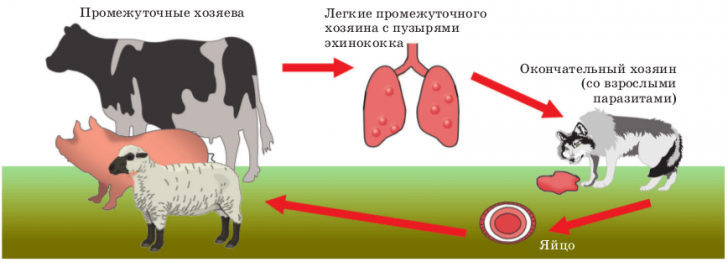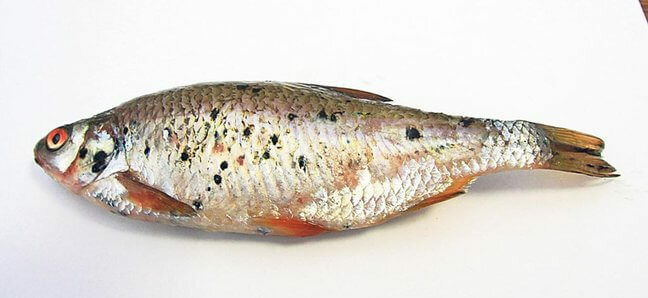Toxocarosis: symptoms, treatment and prevention

Toxocarosis is a parasitic disease caused by toxocaram - large round worms, reaching a length of up to eighteen centimeters.The high risk of contracting the disease is due to the fact that the parasite females are able to save more than 200,000 eggs per day, which fall into the soil with animal feces.For the disease is characterized by a prolonged course, accompanied by the defeat of internal organs.Diseases can be affected by both children's and adult populations, but in the former it occurs several times more often.
Table of contents: Toksokaroz: general information Causes of toxocarosis Forms and symptoms of toxocarosis Signs of toxocarosis in children Analyzes with toxocarosis Treatment of toxocarias Recommended preventive measuresToxocarosis: general information
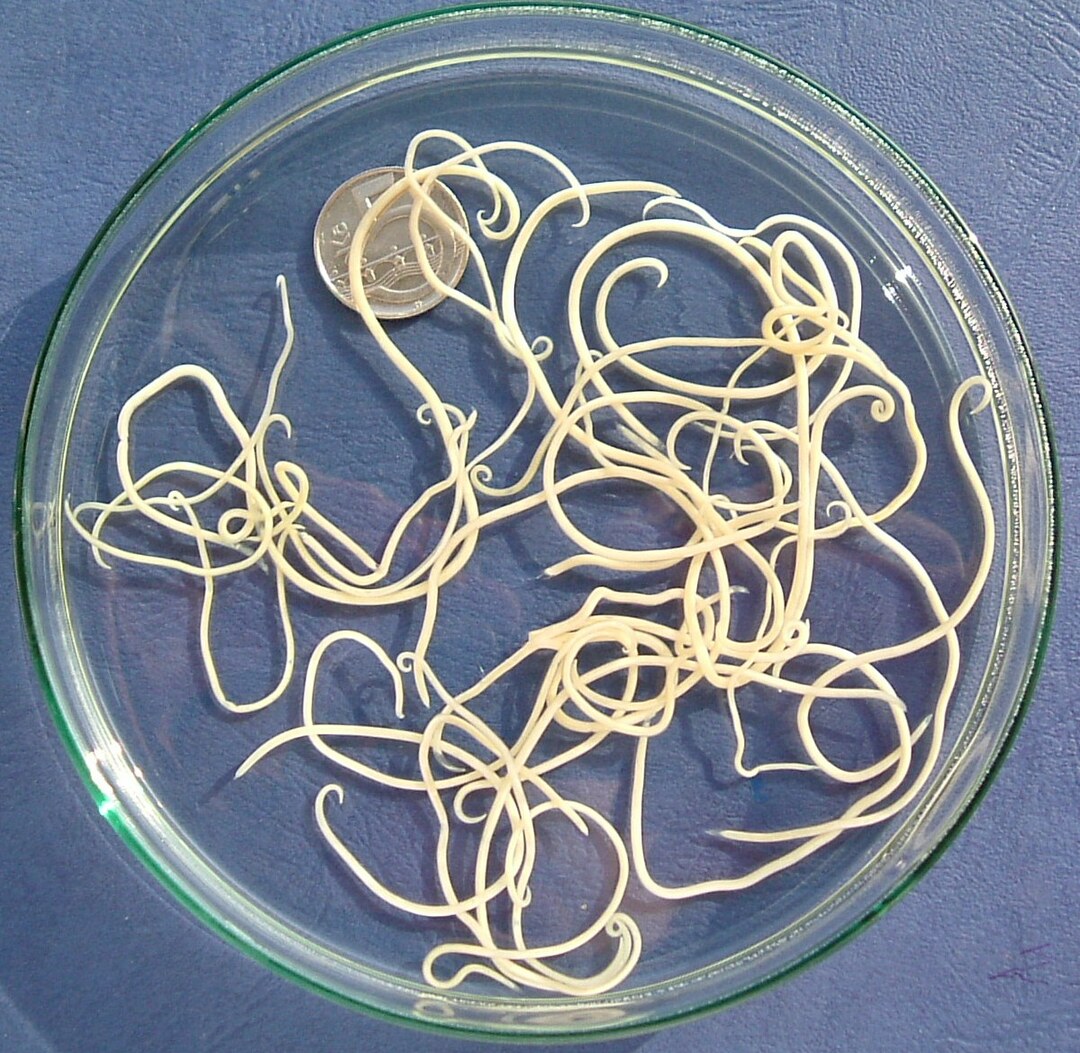 The causative agent of toxocarias was first discovered in 1782.Pathogenic microorganisms Toksokara belong to the genus helminths, which in total numbered several hundred species.Most susceptible to infection with dogs and cats.In the intestine of animals from eggs, larvae are formed, which then penetrate into the vessels and spread throughout the body.
The causative agent of toxocarias was first discovered in 1782.Pathogenic microorganisms Toksokara belong to the genus helminths, which in total numbered several hundred species.Most susceptible to infection with dogs and cats.In the intestine of animals from eggs, larvae are formed, which then penetrate into the vessels and spread throughout the body.
Gradually, the larvae move to the bronchopulmonary system, which is manifested by the formation in the infected animal of a natural cough reflex.At the same time, some of the parasites are in the environment, the remaining larvae enter the intestine through the esophagus.It is there that their transformation takes place in mature individuals capable of laying eggs.So, just a gram of feces of an infected dog or cat can have several thousand eggs, which later pass the stages of maturation in the soil and become dangerous to humans.The greatest surge in incidence is recorded in the autumn-summer season.
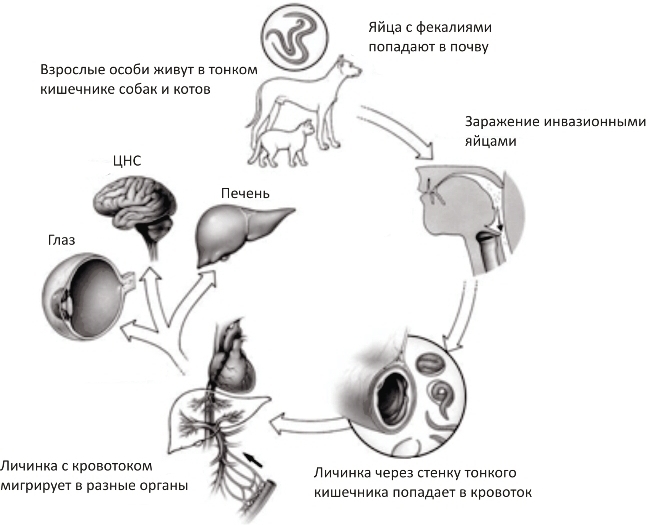
In the human body, toxocars parasitize exclusively in the larval form.Larvae emerge from eggs that are swallowed together with contaminated food, water, etc.With blood, they are carried to all organs, falling primarily in the liver and heart muscle, as well as the visual system, the brain, skeletal muscles.
The causes of toxocarrosis
The main source of infection for humans are pets and street animals, mostly dogs, rarely - cats.The person with toxocarosis is not dangerous to others.The disease is transmitted by the fecal-oral route by swallowing the eggs of parasites.
Please note! To avoid toxocarosis, you should regularly wash your hands with soap, especially after talking to representatives of the animal world.It is also extremely important not to eat unwashed berries, vegetables, greens and other contaminated food.
Taking into account the main causes of toxocariasis, it is possible to identify risk groups.These include:
- young children, constantly playing with land or sand, as well as contacting dogs and cats;
- are people whose professional activities are related to frequent contact with animals or soil( veterinarians, employees of canine shelters and nurseries, builders, etc.);
- gardeners and gardeners;
- dog breeders.
As practice shows, the main factor leading to infection is the elementary non-observance of sanitary and hygienic rules.There are also isolated cases where helminth eggs were transmitted from the infected mother to the fetus during pregnancy, as well as by ingestion of the meat of a sick animal.
In the human body, toxocars can live for several years.Activation of parasites contributes to the suppression of immunity, which occurs, for example, under the influence of stress, with hypothermia, acute diseases, etc.In the absence of favorable conditions for the vital activity of helminths, they eventually die themselves.
Forms and symptoms of toxocarosis
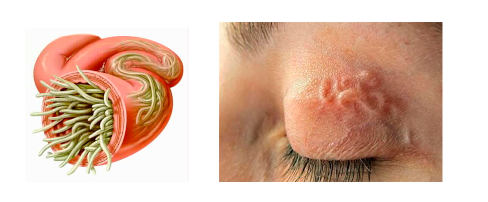
The classification of the disease under consideration includes the systemic and ocular form of the disease. With systemic( visceral) toxocariasis in an infected person, depending on the location of the larvae, the following symptoms and syndromes occur:
- infectious-toxic syndrome - possibly temperature increase, fatigue, weakness;
- hepatic syndrome - the liver is enlarged in size, its structure is densified, painful sensation arises when palpation;
- bronchopulmonary syndrome - a sore throat, cough, a feeling of heaviness and tightness in the chest, a cyanotic skin tone, in severe cases, the development of asthmatic conditions;
- allergic syndrome - hives, shortness of breath, Quincke's edema, etc.;
- enlarged lymph nodes;
- abdominal syndrome, manifested by abdominal pain, stool disorders, vomiting and vomiting, bloating, decreased appetite;
- muscle soreness;
- systemic form of the disease is also often accompanied by lesions from the heart, pancreas, brain;
- in patients with CNS in patients with toxocarias, there are long-term headaches, chronic fatigue syndrome and such symptoms as paralysis and paresis, epileptiform seizures, lethargic conditions.
Important! Visceral toxocariasis is a disease that is diagnosed primarily in children.Adults are most susceptible to ocular toxocariasis, accounting for approximately 65% of all incidences.
Intensive invasion of toxocar leads to the development of symptoms, the so-called eye toxocariasis.Parasites penetrate the vascular membrane of the organs of vision, provoking inflammation, as well as the appearance of granulomas in the lens and retina of the eye.In severe cases, complete loss of vision due to keratitis is possible.It is worth noting that the larvae of toxocar affect usually only one eye.
Toxocarosis can occur in acute, chronic and latent form.In chronic course, periods of exacerbation are replaced by remission.In the periods of calm of the disease in patients, pathological symptoms are either absent or are worn out.With the latent nature of the course, there is no symptomatology, and the detection of helminthiosis is possible only according to laboratory tests.
The intensity of the symptomatic manifestations of the pathology depends on the distribution of the parasite larvae in the patient's body, their quantity, and the state of the immune system of the infected person.
Signs of toxocarosis in children
In most cases, parasites infect children of younger age group,In an acute and latent form.In the latter case, there can be no visible signs, and the diagnosis is possible only on the basis of the results of laboratory tests.
Acute toxocariasis in a child has the same symptoms as other helminthic invasions.It is characterized by: a slight increase in body temperature;
- ;
- violation of the general condition of the child, weakness, restless sleep;
- long-lasting allergic reactions, poorly treatable.If the child already has any allergic disease, during the introduction of worms, its course is aggravated, but it is possible that new diseases develop;
- increase in one or all groups of lymph nodes;
- when localizing larvae in the lungs, there may be manifestations of pneumonia and bronchitis with a barking cough, sometimes resulting in vomiting.
Assays for Toxocarose
We recommend reading:Diagnosis of toxocariasis is usually complicated by the absence of specific symptoms.During the examination, the doctor analyzes the patient's complaints and his history, and also evaluates objective data obtained by visual examination of the patient, palpation, percussion and auscultation, as well as data from laboratory and instrumental studies.
ASD5ASAS
Laboratory diagnostics of the considered form of helminthiosis includes:
- an immunological serological test( ELISA, RSK), which allows detecting antibodies and antigens of the pathogen in the serum of the blood;
- is a general blood test in which eosinophilia, increased ESR and leukocyte count, and decreased hemoglobin are observed with toxocarosis.It is worth noting that the latent and ocular form of the disease is often not accompanied by an increase in the level of eosinophils;
- biochemical blood test in which an increased level of liver enzymes, immunoglobulins and bilirubin is determined.
The methods of instrumental diagnostics include:
- chest X-ray - images of knotty thickening may be seen in the pictures under consideration of the disease;
- Ultrasound of the abdominal cavity, which allows to detect hypoechoic foci in the liver;
- computed tomography;
- examination of the fundus and visual acuity check.
Today, in the diagnosis of helminthic invasion, a special score sheet is also used, which was developed a few dozen years ago.
Treatment of toxocarrosis
 Antioxidant and desensitizing drugs are indicated for the treatment of toxaquaroza.The course of admission and dosage is prescribed by the doctor after confirmation of the diagnosis.
Antioxidant and desensitizing drugs are indicated for the treatment of toxaquaroza.The course of admission and dosage is prescribed by the doctor after confirmation of the diagnosis.
Medications from a group of anthelmintic drugs have a harmful effect on parasites, penetrating into their shell and causing muscle paralysis.The paralyzed helminth does not have the ability to hold its own body in the lumen of the intestine and falls out of it.The excretion of worms from the body occurs together with the calves.Another effect of such drugs is due to their destructive effect on the digestive system of larvae toxocar, which also leads to their death.
Anthelminthic therapy at the discretion of the treating physician may be supplemented with glucocorticosteroids with a pronounced anti-inflammatory effect.If necessary, patients are prescribed antihistamines.
Depending on which system or internal organ the pathological process has spread to, the patient may need to consult a doctor-ophthalmologist, neurologist, infectious disease specialist and other narrow specialists.
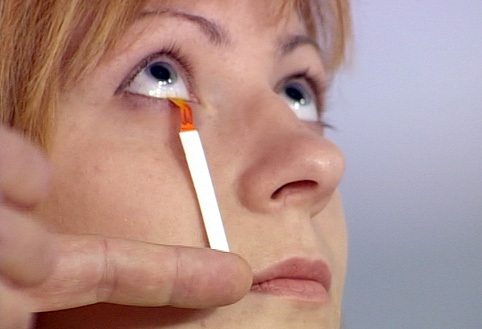 Therapy of eye toxocariasis is carried out with the help of subconjunctival injections with steroid preparations with anti-inflammatory effect.In severe cases, it may be necessary to perform a surgical procedure.
Therapy of eye toxocariasis is carried out with the help of subconjunctival injections with steroid preparations with anti-inflammatory effect.In severe cases, it may be necessary to perform a surgical procedure.
Please note! The human body is unable to cope with toxocar larvae alone, as the surface of their bodies has a special protective lubricant, so that the immune system does not perceive them as foreign bodies.Thus, treatment of toxocarias is an urgent necessity, without which healing is impossible.
The effectiveness of the therapy can be assessed if the patient has a decrease in the symptoms of the pathology, normalizes overall health, and improves the overall clinical blood test.
Recommended preventive measures
Prevention of toxocariasis is one of the primary tasks of health authorities, organizations for combating animal diseases, housing and sanitary epidemiological services.
To prevent infection with helminthiasis, the following measures will help:
- strict adherence to hygienic rules and regulations, in particular washing hands with soap after any contact with land or animals;
- Conducting routine regular surveys of domestic animals and their treatment for the detection of helminthic invasions;
- The adoption by urban services of measures to reduce the number of homeless animals on the streets, as well as the equipment of specialized grounds for dog walking;
- regular sand replacement in sandboxes at playgrounds;
- protection of public parks from walking in dogs;
- disuse of unboiled water from open water bodies, unwashed vegetables and fruits;
- meat consumption only after heat treatment;
- combating insects - potential carriers of egg-worms;
- educational activities in pre-school institutions and schools;
- timely access to a specialist in the detection of the first signs of helminthic invasion, the provision of competent treatment;
- Regular monitoring of individuals at risk of toxocariasis.
It is worth emphasizing once again that young children who have not yet developed proper personal hygiene skills, veterinary and animal care workers, horticultural workers, and people with mental disabilities are most affected by the disease.They should be given special attention in the prevention of toxocariasis.
For more information on the symptoms and treatment of toxocarias you will get by watching this video review:
Chumachenko Olga, pediatrician

